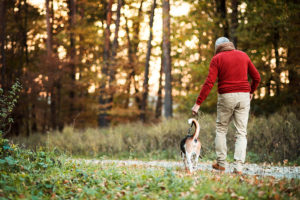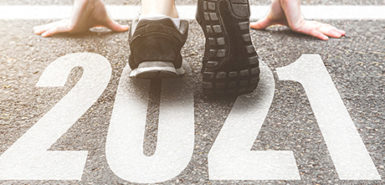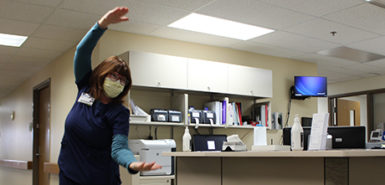
Cold weather is upon us.
And the COVID-19 pandemic is as virulent as ever.
You might feel tempted to just stay in the house this winter and watch television.
But give it a second thought. There are plenty of creative activities that can reduce boredom and, more importantly, help you stay connected with family and friends.
Get outside as often as possible to combat the tedium of being homebound. This is particularly important for the high-risk group of people age 65 and older.
Dress accordingly, too. You don’t have to head out on long hikes in the snow—just take a stroll around the neighborhood or a brisk walk in a park.
You can even take in the crisp beauty of late fall and winter by standing in your driveway, or setting out a lawn chair so you can sit and relax a while.
Read on for a list of safe outdoor activities that allow you to connect with family and friends, as recommended by Spectrum Health infectious disease specialist Liam Sullivan, DO.
Head outdoors
The more people you socialize with, the greater the risk of contracting the COVID-19 virus. If you’re out and about, it’s important to wear a mask and maintain a distance of at least 6 feet from others.
For more athletic senior citizens, cross-country skiing is a good activity—and even downhill skiing is probably safe, Dr. Sullivan said. With the latter, however, be mindful about standing in a lift line and don’t ride in a chairlift with anyone but immediate family.
Going into the ski lodge ups the ante. That’s where crowds gather and where the virus can easily be spread.
The best option? Stay away from crowds. Socially distance if there are only a few people inside.
Retail shopping is best done at an outdoor mall and it can be relatively safe if people take precautions.
“Outdoor activities themselves are reasonably low risk,” Dr. Sullivan said. “Other than staying inside a bubble, there’s going to be some element of risk if you’re gathering with other people. The question is how much risk do you want to take?”
Venues to avoid
Interacting with people indoors is a whole different ball game.
Until the virus is under control, avoid movie theaters and bars, Dr. Sullivan said. They can be prime locations for super-spreader events because they typically lack proper air circulation and they draw large crowds, making it difficult if not impossible for people to socially distance.
In general, eating inside restaurants can be a problem, too, Dr. Sullivan said. Even with smaller crowds, it’s hard to maintain a proper distance from others. People take off their masks to eat, which can increase the spread of the virus in that venue.
Dr. Sullivan urges people to play it safe and get takeout for now.
Even with at-home gatherings, precautions should be taken.
Limit your gathering to your immediate household.
“When you have big parties with family coming from throughout the state, you’re rolling the dice,” Dr. Sullivan said. “The odds are someone in the group will expose everyone else. It only takes one person to expose a room full of people.”
A bright spot on the horizon? Vaccines.
Vaccines for the general public are in the works. The Centers for Disease Control and Prevention have suggested that health care workers and first responders will be first to get vaccinated, followed by seniors.
The timetable is still being hammered out, so the relief may not come until spring or even summer.
“In the meantime, socializing with family and friends is important to our mental health,” Dr. Sullivan said, suggesting people keep visits virtual or outdoors as much as possible. “Do it safely. Be careful, social distance and wear a mask. I can’t emphasize those things enough.”

 /a>
/a>
 /a>
/a>
 /a>
/a>